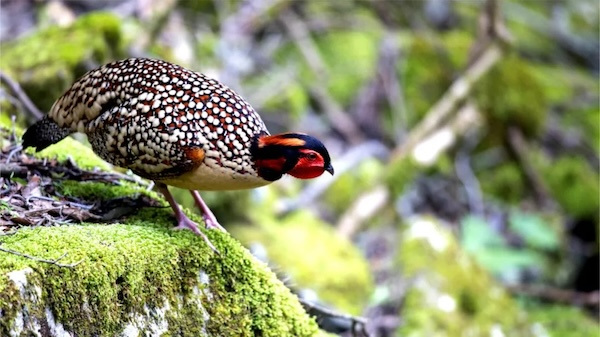
A yellow-bellied tragopan. [Photo/wxls.pro]
After several days of patient observation, volunteers at the Baishanzu Nature Reserve in Lishui, Zhejiang province recently captured a glimpse of the elusive yellow-bellied tragopan.
The male yellow-bellied tragopan boasts a chestnut-brown upper body adorned with pale yellow circular spots outlined in black. Its head is black, crowned with a mix of black and chestnut-red feathers. Its wing feathers exhibit a blend of black-brown and brown-yellow markings. The pale yellow feathers on its abdomen are how it got its yellow-bellied tragopan.
The yellow-bellied tragopan is an endemic species in China, with extremely limited wild populations nationwide. This first-class protected species is typically found at elevations between 800 meters and 1,400 meters in subtropical mountain forests. Its preferred habitats include evergreen broadleaf forests and mixed coniferous-broadleaf forests. These elusive birds thrive in dense undergrowth and grassy patches, preferring to stay out of sight.
Editor: Cheng Dengyu